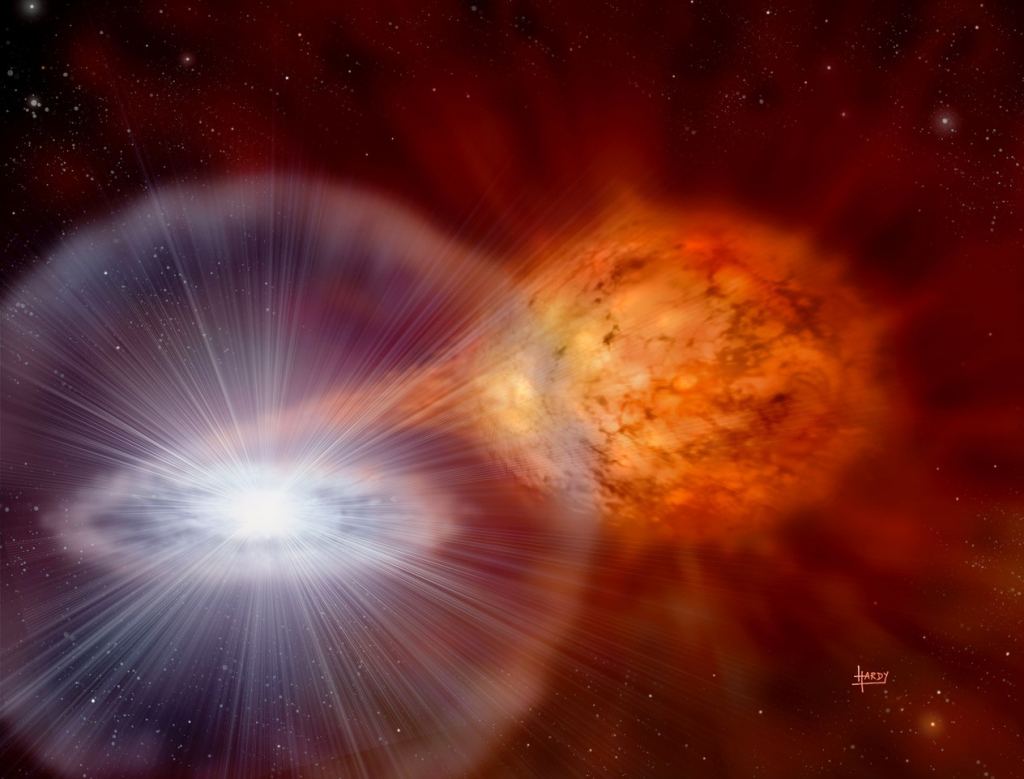Astronomy Jargon 101: Nova
By Paul M. Sutter
In this series we are exploring the weird and wonderful world of astronomy jargon! You’ll feel like a brand new person after today’s topic: nova!
Ah, the nova. The most classic of the kind of cosmic explosion known as a “cataclysmic variable.” In fact, it’s so classic that the proper name for a nova is…”classical nova.”
Before the twentieth century, every kind of explosion on the night sky was called a “nova.” But once we figured out the various processes that were leading to stellar deaths, we came up with a better classification system. That’s how we got supernovae, luminous red novae, and the classical novae.
The classical nova starts off as a binary star system. One star will be more massive than the other. Because that more massive star fuses hydrogen at a faster rate, it will go through its life cycle more quickly. Eventually it will die, leaving behind a core of oxygen and carbon called a white dwarf.
Then its less massive companion finally enters old age. Towards the end of that star’s life, it will swell and become a red giant.
If the orbits of the red giant and the white dwarf get too close, with orbital periods going down to a few days, then things get interesting. The atmosphere of the red giant, which is made of mostly hydrogen, can start to spill over onto the white dwarf, pulled by the gravitational attraction of that leftover core.
That white dwarf is hot, usually having a temperature of a few hundred thousand Kelvin. As all that hydrogen spills onto its surface, the white dwarf heats it up. If conditions are just right, the hydrogen layer building up on the white dwarf can get too hot. This triggers a runaway fusion event which engulfs the entire surface of the white dwarf.
It’s a giant nuclear bomb.
Novae like this happen about ten times per year, but they will only be visible to the naked eye every 12 to 18 months. Sometimes the process can happen again and again, as the red giant continues to spill its own atmosphere onto the white dwarf in a fatal cycle.
The post Astronomy Jargon 101: Nova appeared first on Universe Today.

March 16, 2022 at 01:15AM
via Universe Today read more...

Post a Comment